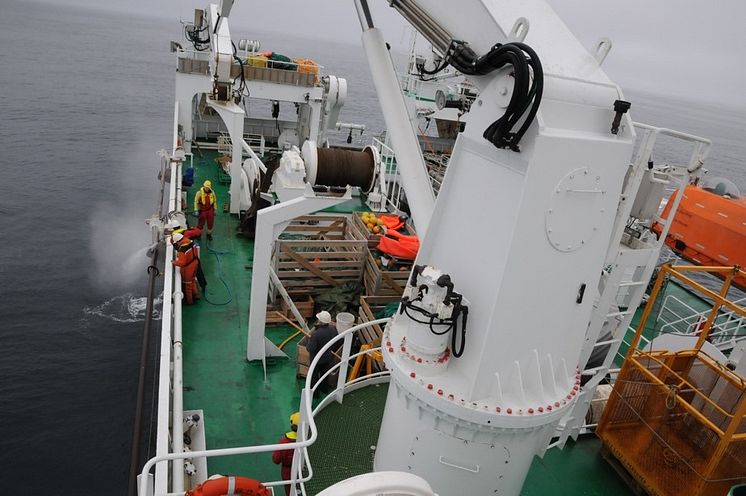
Image -
Preparation of long sediment cores retrieved from the bottom of the sea.Photo_Steffen_L_Jörgensen
Preparation of long sediment cores retrieved from the bottom of the sea.
Sediments are collected by a piston-coring device designed to collect 20 meter of sediment and brought up on the side of R/V G.O. Sars in the Norwegian Greenland sea during 2015 summer expedition with Centre for Geobiology.
Photo credit: Steffen L Jørgensen
In photo: crew members cleaning the outside piston core.
Steffen L Jørgensen
- License:
- Media Use
The content may be downloaded by journalists, bloggers, columnists, creators of public opinion, etc. It can be used and shared in different media channels to convey, narrate, and comment on your press releases, posts, or information, provided that the content is unmodified. The author or creator shall be attributed to the extent and in the manner required by good practice (this means, for example, that photographers should be attributed).
- By:
- Steffen L Jørgensen
- File format:
- .jpg
- Size:
- 924 x 614, 130 KB